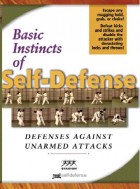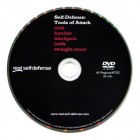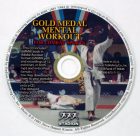This issue’s tip deals with selecting a self-defense system or instructor.
In selecting a self-defense system, the foremost concern is with the validity of skills taught. In this article I use the term skill in the sense of art or trade and so here by a self-defense skill I mean the sum of your
a) techniques,
b) knowledge of when to use these techniques,
c) anticipation and avoidance of dangerous situations,
d) presence of mind while facing hostility, and
e) ability to sense danger.
Self-defense skills must be based on realistic techniques and good physical conditioning — being in poor shape or having untrustworthy techniques makes it difficult to have presence of mind in a dangerous situation. Unrealistic training involving fantastic techniques that can’t work against a determined attacker or are designed for situations you are unlikely to face will also fail to teach you how to anticipate danger.
For the general public, sports-based full-contact martial art systems are the most reliable source of valid self-defense skills
In my opinion, sports-based full-contact systems are the most reliable source of valid self-defense skills for the general public. The need to act rationally while threatened by or experiencing light to moderate pain develops your presence of mind. Having realistic techniques practiced on yourself develops anticipation — your ability to detect setups. Physical conditioning delays fatigue so you clearly perceive the situation and react correctly. It also lets you withstand some blows.
I recommend choosing sports-based full-contact systems because the skills they teach must be functional, at least during a contest against a skilled and well-conditioned opponent. What instructors of boxing, kick-boxing, Muay Thai, full-contact karate, or Brazilian jiu-jitsu teach either works in the ring when money is at stake or the instructors lose their job. That said, you also have to realize that a boxing or a judo club can produce great competitive fighters without teaching techniques geared toward a no-holds-barred self-defense, including use of and defense against weapons and other objects and down-and-dirty tricks. In selecting a gym, you have to ask specifically if self-defense skills are a significant part of training there.
What I strongly advise against is joining a noncontact or even a contact system that has a fancy Asian name but is headed by someone who is not from Asia.
Very few effective self-defense and combat systems, that are not sports-based, are available to the general public
There are effective systems designed either for combat or for self-defense that do not hold open sports contests. These systems are also full-contact (at least in the practice of the unarmed techniques). With few exceptions (for example, of Viet-Vo-Dao), these systems are not available to the general public because they are either military or police system, or they were designed and practiced by criminals. Some are modern, some are old. In any case, the creators of these systems had extensive and bloody combat experience and, as a rule, named the systems (if they named them at all) in their own language. Being who they were (or are), they commanded respect — or else. They had no need to appear exotic or support themselves with someone else’s authority.
The subject of selecting a self-defense system will continue in the next tip.
Self-defense tip from Thomas Kurz, co-author of Basic Instincts of Self-Defense and author of Science of Sports Training, Stretching Scientifically, and Flexibility Express.
Self-Defense Moves
For your defense moves to work under stress they must be based on your natural, instinctive reactions, require little strength and limited range of motion, and be proven in fighting experience.To learn how your natural reactions can instantly defeat any unarmed attack, see the video Basic Instincts of Self-Defense.
Defend Against Weapons
To defend against weapons you have to know how they are used. Also — every stick has two ends … the weapon of attack may become a weapon of defense in your hand …To learn how the typical street weapons (club, knife, razor) are used by an experienced streetfighter and how to practice with them, see the video Self-Defense: Tools of Attack — Club, Hatchet, Blackjack, Knife, Straight Razor.
Mental Toughness
Staying cool under pressure is more important for self-defense than being physically fit and technically skilled. If you can’t control your mind what can you control?To learn mental techniques that let you calmly face any threat and act rationally in the heat of a fight, click here.
For a complete list of our products, click here.







